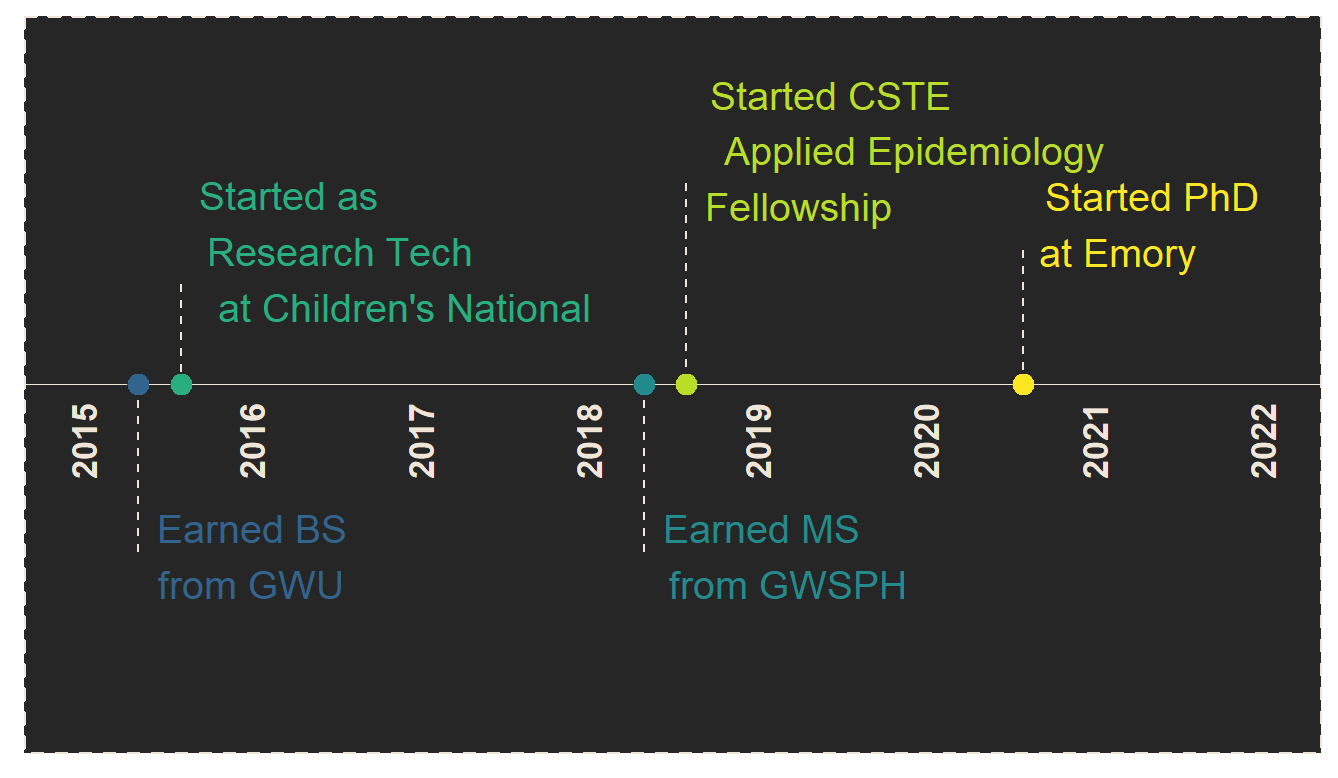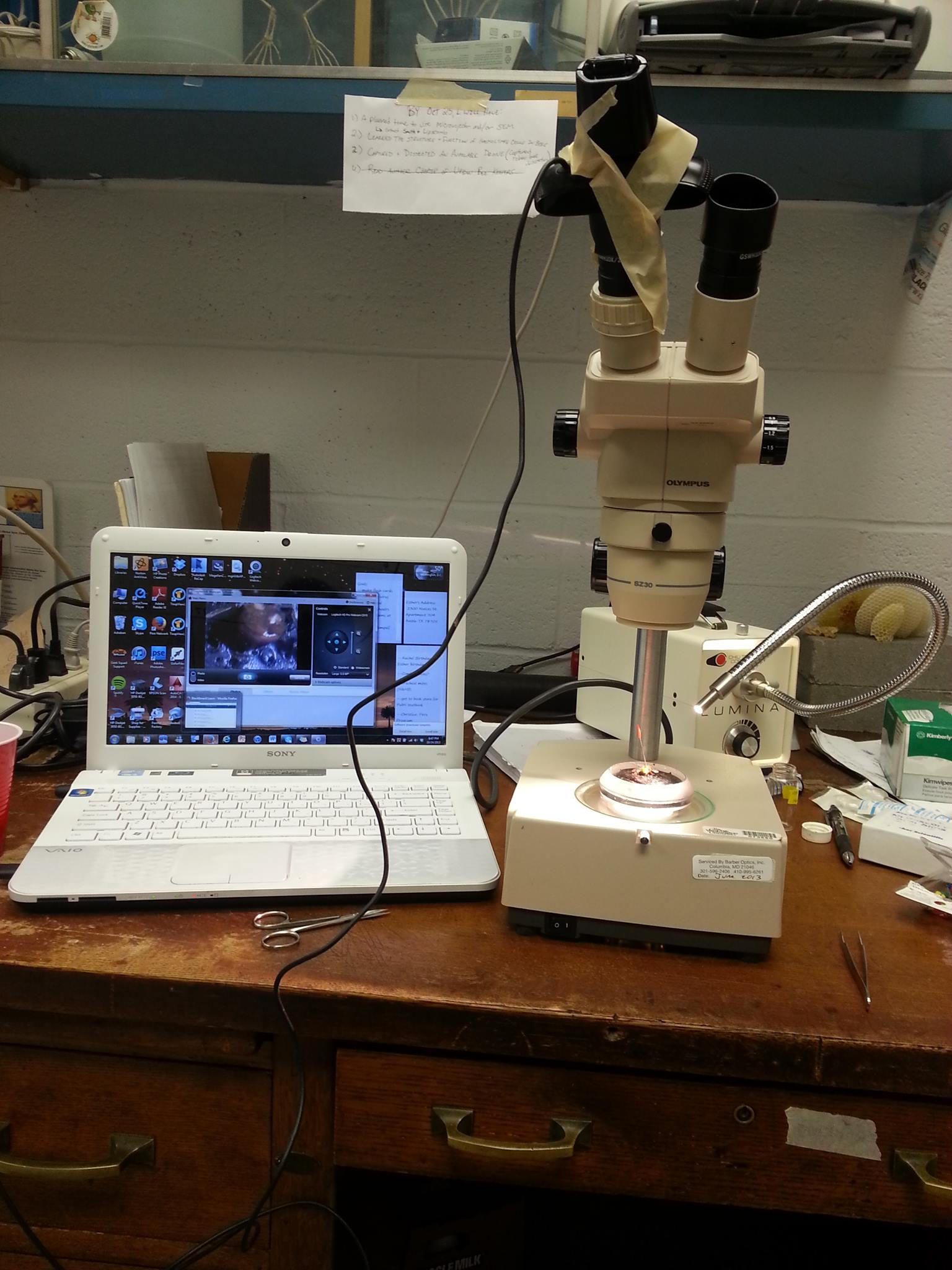Welcome to Bubble Gum and Paperclips. This space is dedicated to the unpolished side of science that is in a constant state of progress. Here you will find examples of different ways to visualize data, examples of coding solutions, and reflections on building a career in public health microbiology and bioinformatics. I’d like to introduce myself and my career journey so far:

I’m a biologist by training with a strong interest and skillset in pathogen genomic epidemiology, and each step along the way has been a unique zag. I started in honey bee research, but pivoted to biomedical research after graduating with my BS in biology from George Washington University. After an engaging time at Children’s National Center for Neuroscience Research as a research technician, and many hours working with mice, I followed my interests in infectious diseases and earned my MS in Public Health Microbiology and Emerging Infectious Diseases from GW’s School of Public Health. I achieved a spot as a fellow for the Council of State and Territorial Epidemiologists’ Applied Epidemiology Fellowship, moved to New York City, and gratefully learned all about the foodborne pathogens of NYC and the inner workings of applied epidemiology. Today, I am a PhD candidate at Emory University where my research focuses on measuring what factors allow pathogens to adapt to their hosts and how that changes or shapes their transmission.
While I am still building my own career, I think lighheartedly about trying new analyses for the first time. There are seemingly endless techniques and softwares to learn, and it has been equally as exciting as frustrating to hit the edge of my own capacity. One of my favorite memories is figuring out that I could take a web cam and tape it to a microscope lense so that I didn’t have to strain my eyes or neck while counting cells on a microscope slide. And what a crowing achievement it was:

I am sure there were adaptors available in 2013, but I was doing my best to keep my research moving with the resources on hand! Masking tape, shower curtains, christmas light switches, and hammers used as door stops have been as important to my progress as well-established and precise protocols.
Scientists, including myself, love a “quick and dirty” test, and allow refinement to come later. As long as it is in the bounds of reality and ethics, this is quite a fun phase of scientific research! It’s useful for marking progress and the way to stay curious and come up with creative solutions to new problems. To me, it’s also an excellent opportunity to find out what is going on in my research community. For bioinformatics and general coding, I think there is an amazing digital community. Even while putting this post together I referenced sites (cough Stack Overflow) which have the primary function of sharing solutions to problems for coders at all levels and across languages. It’s fascinating to see the variety of approaches, and it’s simultaneously interesting and heartbreaking to find out that no one has been able to answer a post for the same question that you have.
I think it’s important to share the “bubble gum” of my work to remind scientists at all stages of their careers that there is no true linear path in research. There are weird side projects and failed experiments, bizarre code gymnastics and many nights where you think you’re actually cooking up a conspiracy theory rather than testing a reasonable hypothesis. I hope that here I can reignite some of that fun of discovery by sharing different kinds of code and offering insights into my perspective as a scientist. I hope you’ll have fun too!
By the way, the source code for the timeline above was done using R and can be found here, much of which I was able to learn from this blog post